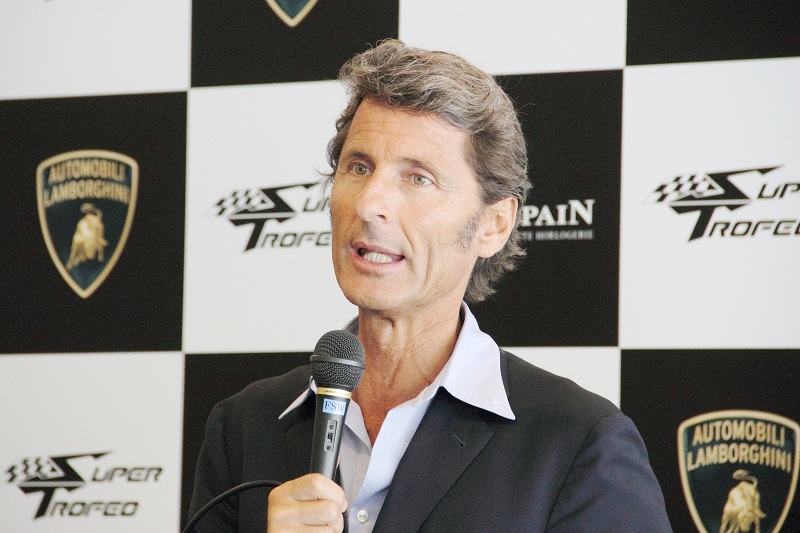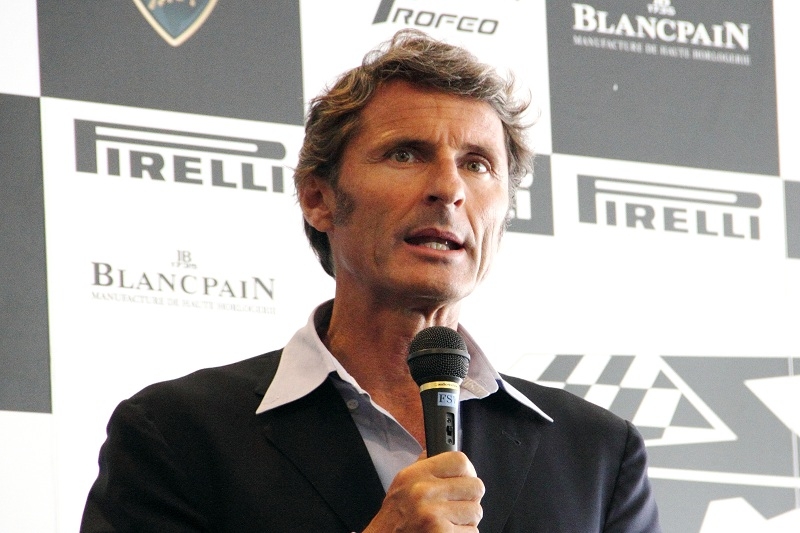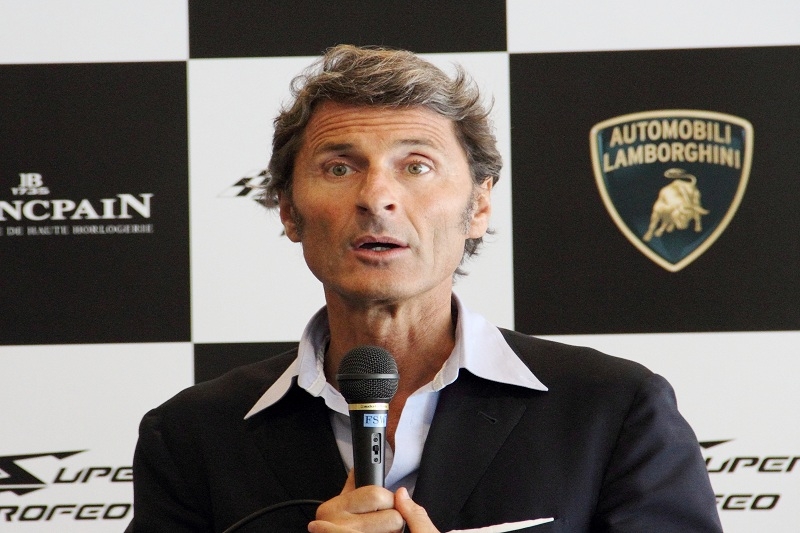We recently had the privilege to sit down and have a chat with Stephan Winkelmann, president and chief executive officer of Automobili Lamborghini S.p.A. about Lamborghini at the Fuji Speedway.
Lamborghini as a company has a storied history. Founded in 1963, the company has changed hands many times, eventually ending up under the Volkswagen Group umbrella, and success seems to have arrived at last. In fact Lamborghini has experienced incredible growth in the past couple of years, despite the crisis, the luxury car brand keeps achieving outstanding results. I recently had the privilege to sit down with Stephan Winkelmann, president and chief executive officer of Automobili Lamborghini S.p.A., and talk about the fabled marquee. At 49 years of age, Mr Winkelmann's youthful exuberance belies his age, as he passionately talks about the brand.

BP: Hi Mr Winkelmann, first and foremost could you tell us more about Lamborghini's motorsports initiatives and how it could benefit the company's branding and customer relations efforts?
SW: In terms of motorsports, Lamborghini has moved beyond just having driving experiences on the race tracks. We have recently initiated a double pronged approach worldwide, with two different levels. One of them is known as the Esperienza, which quite simply translates into an experience. This is for our prospects - potential customers and fans that dream of owning their very own Lamborghini one day, and through the Esperienza, their dreams of driving one is instantly fulfilled. The Esperienza allows them to experience the brand and the cars, and to understand how easy it is to drive these cars. The other one is the Lamborghini Academy, which is a customer program that allows us to impart a slew of driving skills that range from safety driving to discovering a potential race car driver to participate in the Super Trofeo series, which is a one make race for gentleman drivers. Through these two initiatives, the prospects and customers learn much more about the cars and what they can do with it than by driving it themselves. These initiatives also create a family atmosphere for the existing Lamborghini owners, and help forge a bond between the company and its customers, thus enhancing the relationship. What we aim to do is tell customers and prospects that it is all about the emotion and the passion for the brand and the products when it comes to owning a Lamborghini. And as mentioned earlier, the Super Trofeo allows one to drive a Lamborghini race car on a F1 track while being watched by family, friends and other spectators, and this series is being held in three regions of Northern America, Europe and Asia. Last but not the least; we have our own GT3 initiative, which is a development of a race-ready Gallardo GT3 that will be driven by professional drivers to compete in FIA’s new GT3 category.

BP: Many high-performance car manufacturers have shown that hybrid performance power trains might be the future. What is Lamborghini’s take on the technology?
SW: It is vital that we as a supercar manufacturer keep a balance between the DNA of the brand, which is keeping true to certain brand traits and being environmentally responsible. Lamborghini as we all know, possesses an illustrious history and the technical knowhow in developing naturally aspirated engines, which is the main pillar for Lamborghini, but I also understand that there is a growing onus to adhere to the social responsibility of being more fuel efficient and green. In fact, we are actually in the midst of exploring various possibilities; being part of the Volkswagen Group, we have access to all the technology that is made available by the parent company, so I wouldn’t discount the possibility of new initiatives. But back to the ethos of the brand itself, Lamborghini owners do not buy the car because they only want to go from point A to B, or use it as a daily driver. One buys a Lamborghini because it is a fulfilment of a dream. It is never about the reduction of emissions or improving the mileage but the emotions and innovation derived from buying a Lamborghini. That being said, I do see a future in which naturally aspirated engines will work with hybridisation. Lamborghini is open to this technology and it is an opportunity that we are looking at carefully, but everything at the right time. And indeed, there will come a time where we will need to change in order to stay competitive and expand our range of offerings. A first indication of a hybrid would be the introduction of a third model in the form of a SUV, because such a car would make more sense as it is more of a daily driver than any other car we might produce in our model range, and I don’t discount the possibility of force inducted engines and turbocharged hybrid engines as well, but at the end of the day, Lamborghini still has to stay true to its ethos — producing cars that are exciting and emotive.

BP: The Veneno, Egoista and other recent highly exclusive limited-edition models have been successful for Lamborghini. Is that part of the business model moving forward?
SW: As a business, it is very important that we do not lose money in producing these one off models, as it does not make financial sense then as a company to produce such cars. However, these special cars that we have produced have been very well received, and it was a clear indication of how solid the brand is. This exercise also presents to the designers and engineers an opportunity to freely express their ideas and prove what they are capable of producing in terms of innovation and design, which in turn benefits the brand greatly. And through this, Lamborghini can show to the world how much we have progressed through the past decade, what we are capable of producing, and how much people are willing to offer to buy such cars.

BP: What are your goals and plans for the Asian market, in view of cooling sales, and will you ever recover to the record 2008 levels, considering the uncertainty in the economy at the moment?
SW: Singapore unfortunately for its new taxation presents a new problem, which is a pity, because Singapore was an excellent market. EuroSports Auto’s Melvin Goh is one of our best partners globally and I sincerely hope the Singaporean government will change its mind about the punitive taxation system. As for Hong Kong, ceteris paribus, we are stable. As for China, even though the global market is growing, the high end supercar market has shown signs of decline since the start of 2011, and for the past two years, the market has not shown signs of incremental recovery, we hope this will change soon and see the return of potential buyers. As for recovery in the midst of market uncertainty, I think this will depend on the global economy on a whole, as well as our line up of future cars. What I can tell you is that we had two years of growth in a row, and I am sure our volumes will not be worse off than 2012. Lamborghini is not about the numbers, as we are not fixated about setting new records, but I am sure we can easily surpass the records of 2008. However, we are not actively pushing to achieve this, as we would like it to come naturally, and it will eventually happen, when the market is back on track.
